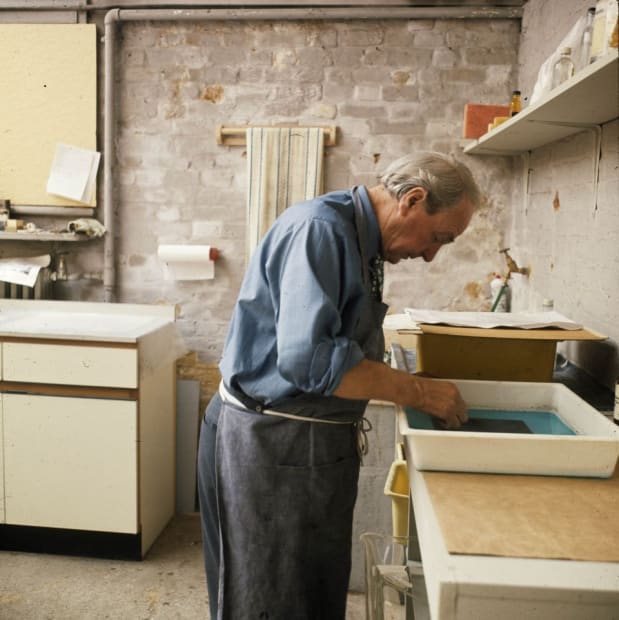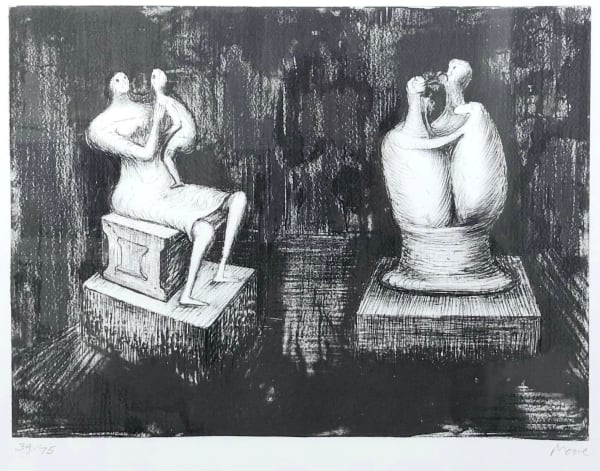We are delighted to present an online viewing room that brings together a collection of graphic works by the modern artist Henry Moore, exploring the intersection between the artist's sculptures, drawings and prints. Henry Moore was a renowned British sculptor known for his iconic abstract sculptures that often depicted the human form. The impact of his artistic work extended beyond his practice of sculpture into other fields, such as printmaking.
-
Henry Moore's exploration of printmaking began in the early 1930s when he was introduced to the medium by his fellow artist and friend, Graham Sutherland. He initially experimented with woodcuts but soon turned to etching, lithography, and other printmaking techniques, which became an integral part of his artistic practice - often using the medium to sketch out the ideas prior to making his sculptures.While Moore is principally known for his sculpture - including monumental public sculptures placed across the world - etchings and lithographs are a more intimate and equally important element of his creative process. It formed an increasingly important part of Moore's practice from the 1970s onwards by working with masters printers to meet the growing international demand for his artistic work. A sinuous style and combined interest in the human figure, organic forms, and the landscape distinguishes Moore's printing practice.
-

-

-
-
One of the critical aspects of Moore's artistic influence is his reimagining of the human figure. Moore's abstracted and simplified representations of the body challenged traditional notions of figurative art and expanded the possibilities of sculptural expression. His sculptures often featured curvilinear and biomorphic forms that conveyed a sense of vitality and movement, blurring the boundaries between the body and the surrounding space. Moore's approach to the human figure as a sculptural form rather than a realistic representation inspired a new vision and ways of depicting the human body, pushing the boundaries of figurative art in modern art and challenging conventional ideas of representation.Moore's notable contribution to printmaking was his innovative approach to etching. He often experimented with different materials and techniques, such as using acid baths to create textures and patterns on the metal plates, which resulted in unique and expressive prints. Moore's etchings showcased his ability to capture his sculptural forms' sensuousness and tactile quality, translating them into two-dimensional prints. His graphic works often feature abstracted and simplified representations of the human figure, with smooth curves and flowing lines that evoke a sense of movement and grace.
-
-
Moore's fascination with the natural world are reflected in his work. His prints feature earthy tones, textures and biomorphic shapes with references not only to the human form but also to natural forms such as shells, bones, and pebbles. Moore's organic and abstract forms, which often referenced the landscape, inspired many artists to explore the relationship between art and nature and to incorporate natural elements into their works. His deep connection to the countryside and his belief in the universality of natural forms resonated with the sentiments of modern art. Moore's prints conveyed a sense of timelessness and universality, capturing the essence of the natural world and the body in his distinctive style.'For the sculptor, the perception of form is an interior sensation: he in fact perceives every shape, whatever its dimensions and its complexity. As though it were contained in the hollow of his hand, and mentally visualised in the multiplicity of its aspects.' - Henry Moore.
-

-











